Premium Sugar-Free Whey Protein
Experience the highest quality sugar-free whey protein formulated for optimal taste without added sugars. These premium supplements feature sophisticated sweetener blends using stevia, monk fruit, or other natural alternatives. Our curated selection highlights products specifically designed for low-carb, keto, and blood sugar-conscious nutrition without compromising flavor.

Myprotein
Myprotein Impact Whey Protein Isolate, 5.5 Lbs (81 Servings) Unflavored, 25g Protein, 3.5g Glutamine & 6g BCAA Per Serving
Price per 25g protein
$0.91

Isopure
Isopure Plant-Based Protein Powder, Lactose Free, Gluten Free, With Iron, Chocolate, 20g Plant Protein Per Serving, 1.37 Lbs, 20 Servings
Price per 25g protein
$0.96
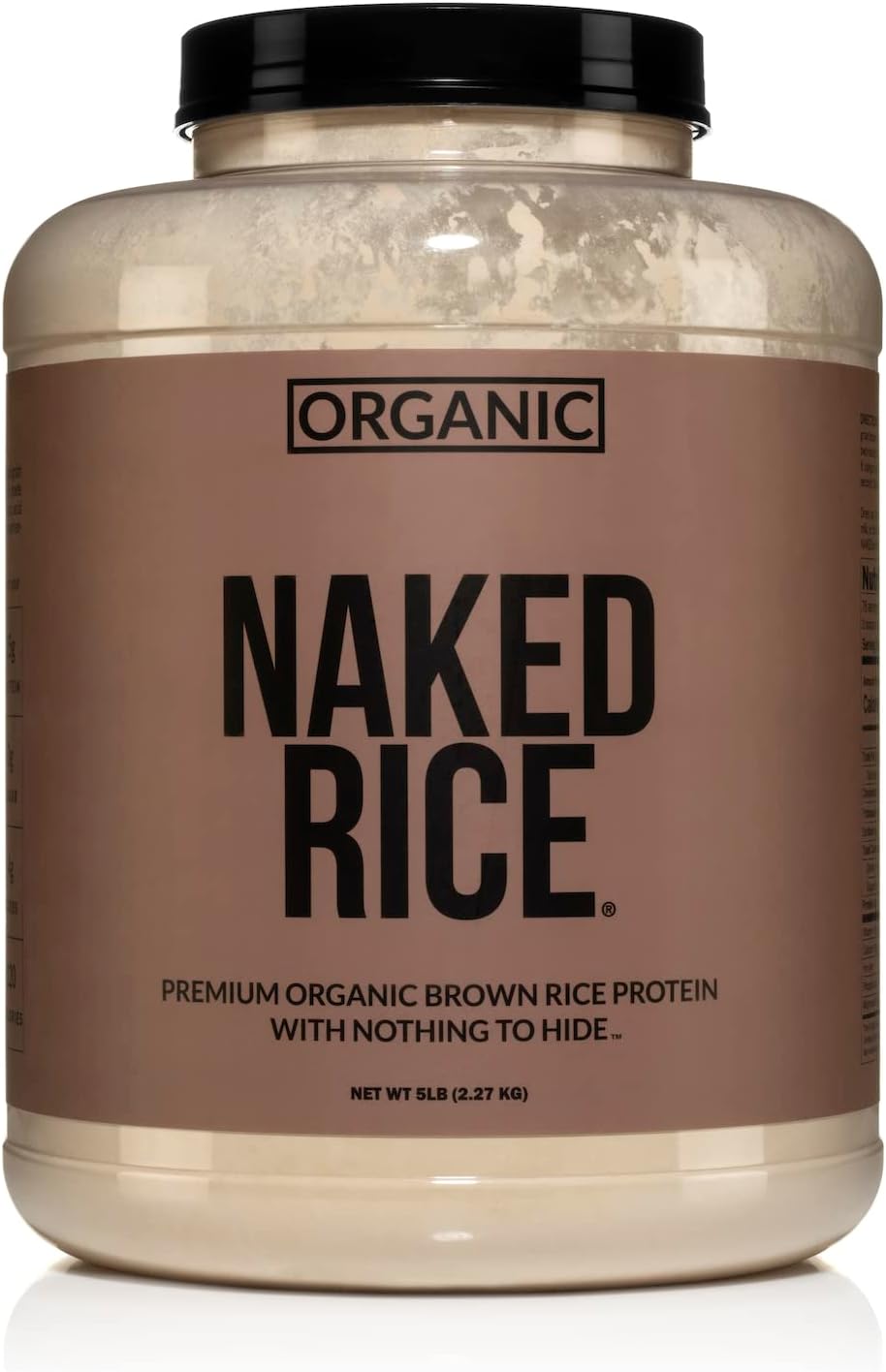
Naked Nutrition
NAKED nutrition Rice - Organic Brown Rice Protein Powder - Vegan Protein Powder - 5Lb Bulk, Gmo Free, Gluten Free & Soy Free. Plant-Based Protein, No Artificial Ingredients - 76 Servings
Price per 25g protein
$0.99

Isopure
Isopure Low Carb 100% Pure Whey Isolate Protein Powder, Lactose Free, Gluten Free, With Vitamins, Strawberry, 25g Protein Per Serving, 1 Lb, 14 Servings (Packaging May Vary)
Price per 25g protein
$1.00

Myprotein
Myprotein Impact Whey Protein Isolate, 2.2 Lbs (40 Servings) Salted Caramel, 21g Protein & 6g BCAA Per Serving, Gluten-Free Shake for Muscle Strength & Recovery
Price per 25g protein
$1.19

Isopure
Isopure Zero Carb 100% Pure Whey Isolate Protein Powder, Lactose Free, Gluten Free, with Vitamins, Unflavored, 25g Protein Per Serving, 1 Lb, 16 Servings (Packaging May Vary)
Price per 25g protein
$1.24

Isopure
Isopure Zero Carb 100% Pure Whey Isolate Protein Powder, Lactose-Free, Gluten-Free, with Vitamins, Unflavored, 25g Protein Per Serving, 4.5 Lbs, 70 Servings (Packaging May Vary)
Price per 25g protein
$1.28

Isopure
Isopure Zero Carb 100% Pure Whey Isolate Protein Powder, Lactose Free, Gluten Free, With Vitamins, Unflavored, 25g Protein Per Serving, 3 Lbs, 47 Servings (Packaging May Vary)
Price per 25g protein
$1.30

Isopure
Isopure Zero Carb 100% Pure Whey Isolate Protein Powder, Lactose Free, Gluten Free, With Vitamins, Cookies & Cream, 25g Protein Per Serving, 1 Lb, 15 Servings (Packaging May Vary)
Price per 25g protein
$1.33

Isopure
Isopure Zero Carb 100% Pure Whey Isolate Protein Powder, Lactose Free, Gluten Free, With Vitamins, Strawberries & Cream, 25g Protein Per Serving, 1 Lb, 15 Servings (Packaging May Vary)
Price per 25g protein
$1.35
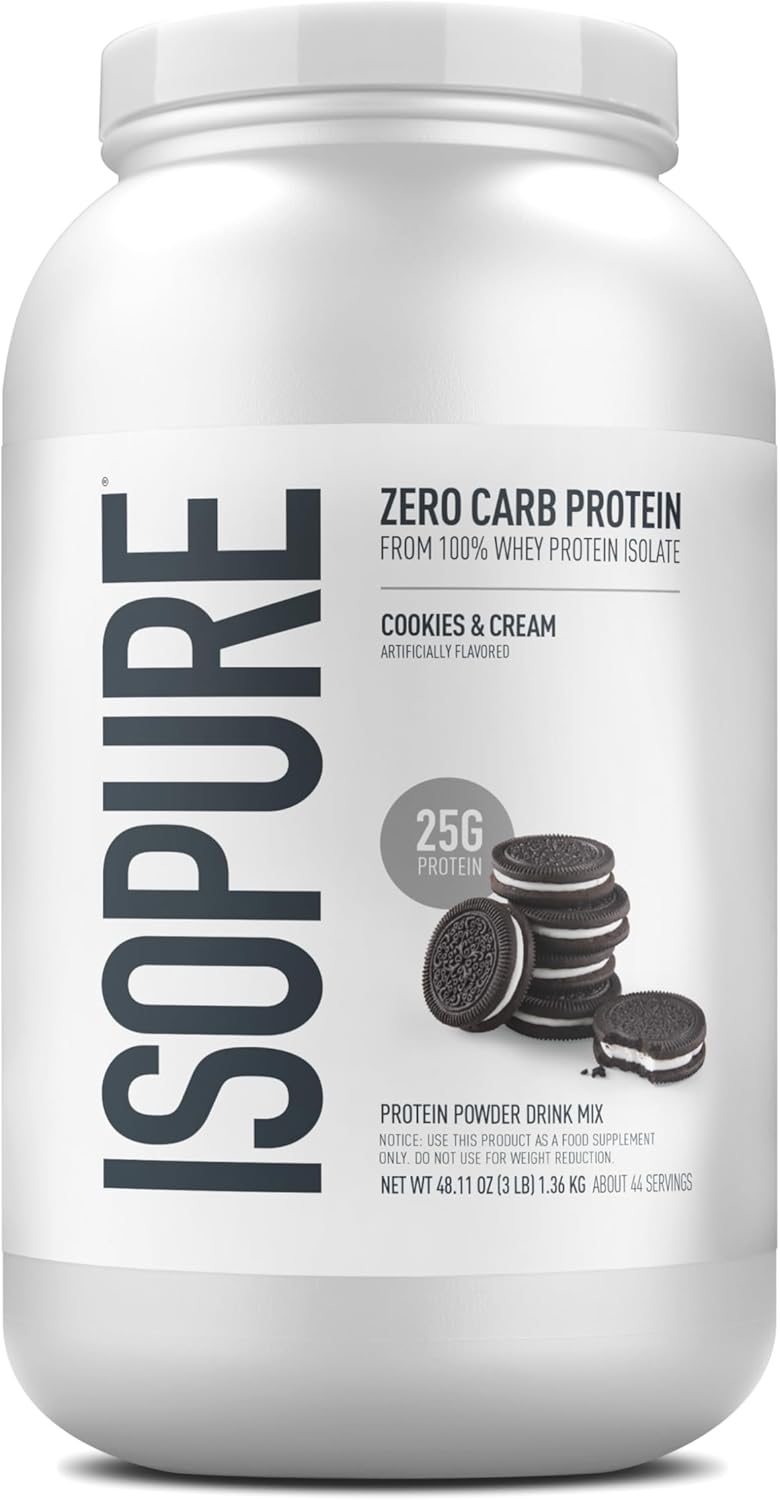
Isopure
Isopure Zero Carb 100% Pure Whey Isolate Protein Powder, Lactose Free, Gluten Free, With Vitamins, Cookies & Cream, 25g Protein Per Serving, 3 Pounds, 44 Servings (Packaging May Vary)
Price per 25g protein
$1.36

Isopure
Isopure Zero Carb 100% Pure Whey Isolate Protein Powder, Lactose Free, Gluten Free, With Vitamins, Strawberries & Cream, 25g Protein Per Serving, 3 Lbs, 44 Servings (Packaging May Vary)
Price per 25g protein
$1.38

Isopure
Isopure Zero Carb 100% Pure Whey Isolate Protein Powder, Lactose Free, Gluten Free, With Vitamins, Strawberries & Cream, 25g Protein Per Serving, 7.5 Lbs, 110 Servings (Packaging May Vary)
Price per 25g protein
$1.38

Isopure
Isopure Low Carb 100% Pure Whey Isolate Protein Powder, Lactose Free, Gluten Free, With Vitamins, Dutch Chocolate, 25g Protein Per Serving, 7.5 Lbs, 103 Servings (Packaging May Vary)
Price per 25g protein
$1.40

Dymatize
Dymatize Nutrition ISO 100, Whey Protein Powder, Gourmet Chocolate, 5 Pound
Price per 25g protein
$1.41

Isopure
Isopure Zero Carb 100% Pure Whey Isolate Protein Powder, Lactose Free, Gluten Free, With Vitamins, Creamy Vanilla, 25g Protein Per Serving, 7.5 Lbs, 110 Servings (Packaging May Vary)
Price per 25g protein
$1.41

Myprotein
Myprotein Clear Whey Isolate Protein Powder, 35 Servings (1.9lbs) Lemonade, 20g Protein per Serving, Naturally Flavored Drink Mix, Daily Protein Intake for Superior Performance
Price per 25g protein
$1.43

Isopure
Isopure Zero Carb 100% Pure Whey Isolate Protein Powder, Lactose Free, Gluten Free, with Vitamins, Cookies & Cream, 25g Protein Per Serving, 7.5 Lbs, 110 Servings (Packaging May Vary)
Price per 25g protein
$1.46

Naked Nutrition
NAKED Rice 1Lb - Organic Brown Rice Protein Powder - Vegan Protein Powder, GMO Free, Gluten Free & Soy Free. Plant-Based Protein, No Artificial Ingredients - 15 Servings
Price per 25g protein
$1.47

Myprotein
Myprotein Impact Whey Protein Isolate, 2.2 Lbs (40 Servings) Unflavored, 22g Protein, 3.5g Glutamine & 4.5g BCAA Per Serving, Shake for Muscle Strength & Recovery
Price per 25g protein
$1.47

Naked Nutrition
NAKED Whey Isolate Protein - Only 2 Ingredients, 30g Grass-Fed Protein, Zero Carb, Unflavored, Undenatured, Non-GMO, No Soy, Gluten-Free, No Preservatives - 28 Servings
Price per 25g protein
$1.55
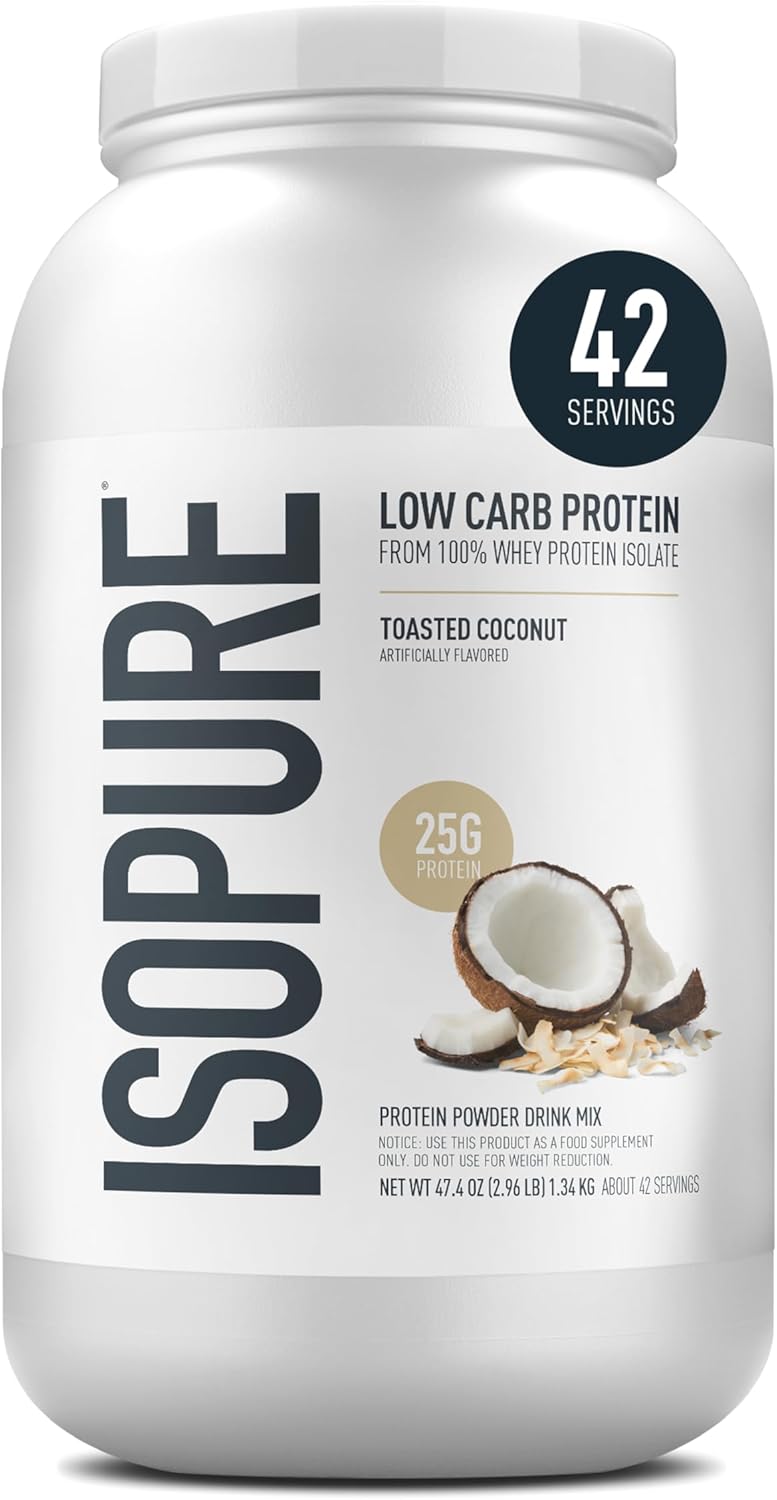
Isopure
Isopure Low Carb 100% Pure Whey Isolate Protein Powder, Lactose Free, Gluten Free, With Vitamins, Toasted Coconut, 25g Protein Per Serving, 3 Lbs, 42 Servings (Packaging May Vary)
Price per 25g protein
$1.59
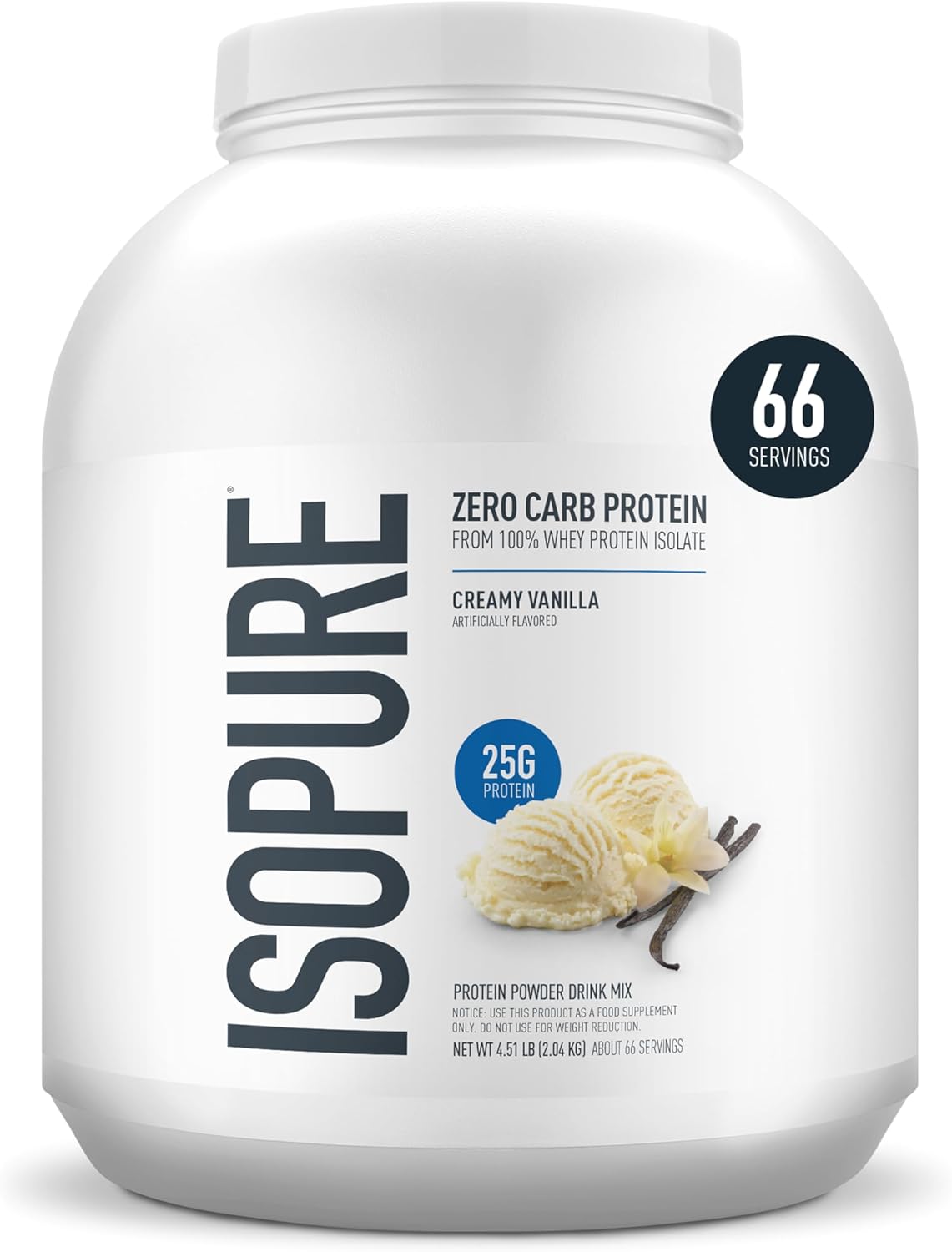
Isopure
Isopure Zero Carb 100% Pure Whey Isolate Protein Powder, Lactose Free, Gluten Free, With Vitamins, Creamy Vanilla, 25g Protein Per Serving, 4.5 Lbs, 66 Servings (Packaging May Vary)
Price per 25g protein
$1.59

Myprotein
Myprotein Clear Whey Isolate Protein Powder, 20 Servings (1.1lbs) Fruity Mike and IKE Caribbean Punch Drink Mix, 20g Protein per Serving, Daily Drink for Superior Performance
Price per 25g protein
$1.69

Myprotein
Myprotein Clear Whey Isolate Protein Powder, 20 Servings (1.1lbs) Fruity Mike and IKE Sour Watermelon Drink Mix, 20g Protein per Serving, Daily Drink for Superior Performance
Price per 25g protein
$1.69

Isopure
Isopure Low Carb 100% Pure Whey Isolate Protein Powder, Lactose Free, Gluten Free, With Vitamins, Dutch Chocolate, 25g Protein Per Serving, 1 Lb, 14 Servings (Packaging May Vary)
Price per 25g protein
$1.69

Isopure
Isopure Zero Carb 100% Pure Whey Isolate Protein Powder, Lactose Free, Gluten Free, with Vitamins, Creamy Vanilla, 25g Protein Per Serving, 3 Lbs, 44 Servings (Packaging May Vary)
Price per 25g protein
$1.70

Isopure
Isopure Low Carb 100% Pure Whey Isolate Protein Powder, Lactose Free, Gluten Free, With Vitamins, Chocolate Peanut Butter, 25g Protein Per Serving, 3 Lbs, 40 Servings (Packaging May Vary)
Price per 25g protein
$1.71

Isopure
Isopure Low Carb 100% Pure Whey Isolate Protein Powder, Lactose Free, Gluten Free, With Vitamins, Dutch Chocolate, 25g Protein Per Serving, 4.5 Lbs, 62 Servings (Packaging May Vary)
Price per 25g protein
$1.72

Isopure
Nature'S Best Isopure Banana Cream (Zero Carb), 3-Pound Tub
Price per 25g protein
$1.73

Isopure
Isopure Low Carb 100% Pure Whey Isolate Protein Powder, Lactose Free, Gluten Free, With Vitamins, Dutch Chocolate, 25g Protein Per Serving, 3.07 Lbs, 41 Servings (Packaging May Vary)
Price per 25g protein
$1.73

Isopure
Isopure Low Carb 100% Pure Whey Isolate Protein Powder, Lactose Free, Gluten Free, With Vitamins, Dark Chocolate, 25g Protein Per Serving, 1 Lb, 14 Servings (Packaging May Vary)
Price per 25g protein
$1.78

Isopure
Isopure Low Carb 100% Pure Whey Isolate Protein Powder, Lactose Free, Gluten Free, With Vitamins, Vanilla Bean, 25g Protein Per Serving, 1 Lb, 14 Servings (Packaging May Vary)
Price per 25g protein
$1.78

Isopure
Isopure Zero Carb 100% Pure Whey Isolate Protein Powder, Lactose Free, Gluten Free, with Vitamins, Creamy Vanilla, 25g Protein Per Serving, 1 Lb, 15 Servings (Packaging May Vary)
Price per 25g protein
$1.80

Orgain
Orgain Organic Vegan Protein Powder, Cookies & Cream - 21g Plant Based Protein, 7g Prebiotic Fiber, Low Net Carb, No Lactose Ingredients, No Added Sugar, Non-GMO, For Shakes & Smoothies, 2.03 lb
Price per 25g protein
$1.80

Optimum Nutrition
Optimum Nutrition Gold Standard 100% Plant Based Protein Powder, Gluten Free, Vegan Protein for Muscle Support and Recovery with Amino Acids - Creamy Vanilla, 20 Servings (Packaging May Vary)
Price per 25g protein
$1.82

Optimum Nutrition
Optimum Nutrition Gold Standard 100% Plant Based Protein Powder, Gluten Free, Vegan Protein for Muscle Support and Recovery with Amino Acids - Rich Chocolate Fudge, 20 Servings (Packaging May Vary)
Price per 25g protein
$1.82

Isopure
Isopure Plant-Based Protein Powder, Lactose Free, Gluten Free, With Iron, Unflavored, 20g Plant Protein Per Serving, 1.15 Lbs, 20 Servings
Price per 25g protein
$1.83

Isopure
Isopure Plant-Based Protein Powder, Lactose Free, Gluten Free, With Iron, Vanilla, 20g Plant Protein Per Serving, 1.23 Lbs, 20 Servings
Price per 25g protein
$1.83
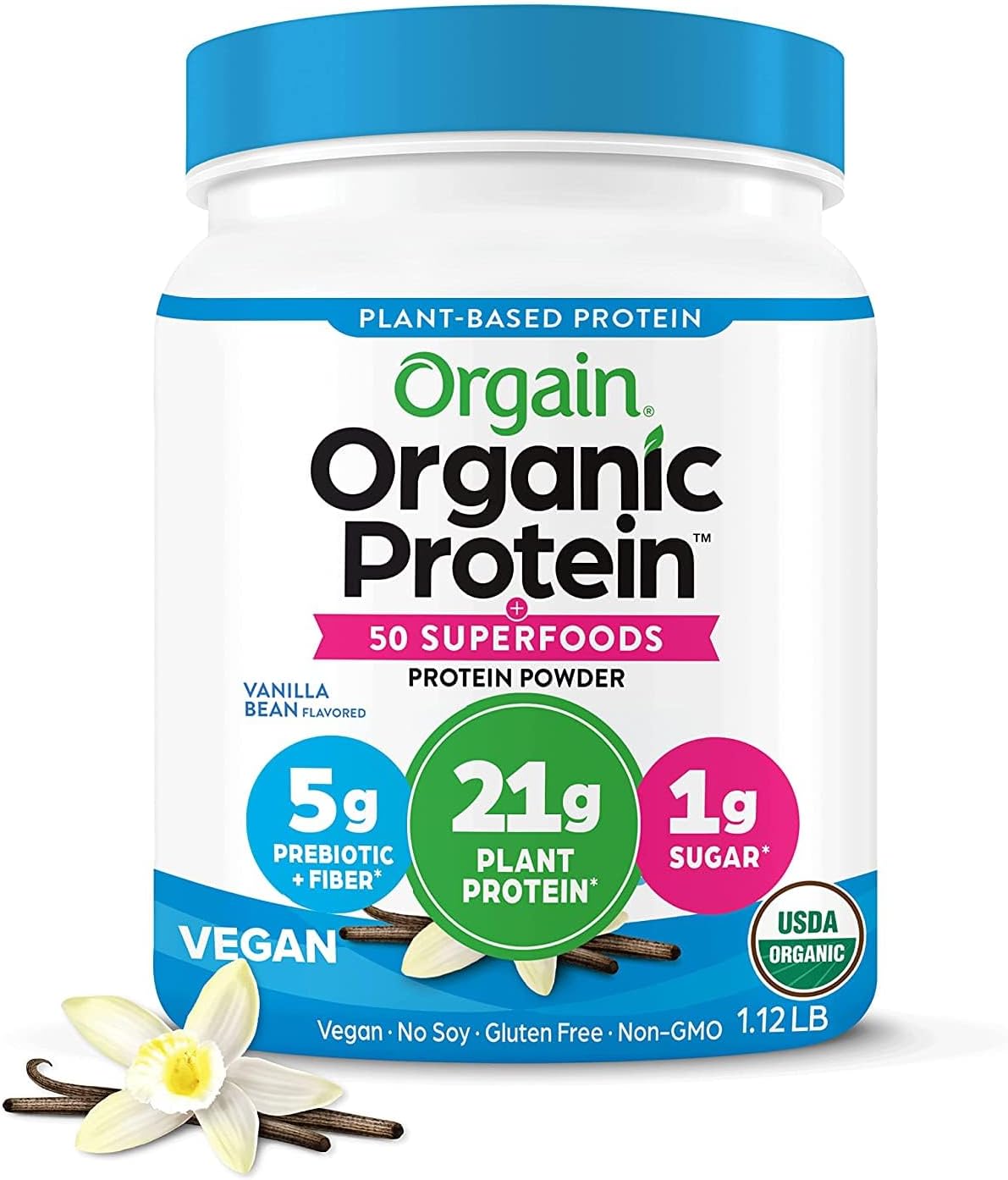
Orgain
Orgain Organic Vegan Protein + 50 Superfoods Powder, Vanilla Bean - 21g Plant Based Protein, 8g Prebiotic Fiber, No Lactose Ingredients, Gluten Free, No Added Sugar, 1.12 lb (Packaging May Vary)
Price per 25g protein
$1.83

Isopure
Isopure Zero Carb 100% Pure Whey Isolate Protein Powder, Lactose Free, Gluten Free, With Vitamins, Banana Cream, 25g Protein Per Serving, 3 Lbs, 44 Servings (Packaging May Vary)
Price per 25g protein
$1.85

Myprotein
Myprotein Clear Whey Isolate Protein Powder, 1.1 Lb (20 Servings) Peach Mango, 20g Protein per Serving, Naturally Flavored Drink Mix, Daily Protein Intake for Superior Performance
Price per 25g protein
$1.87

Myprotein
Myprotein Clear Whey Isolate Protein Powder, 20 Servings (1.1lbs) Strawberry, 20g Protein per Serving, Naturally Flavored Drink Mix, Daily Protein Intake for Superior Performance
Price per 25g protein
$1.87
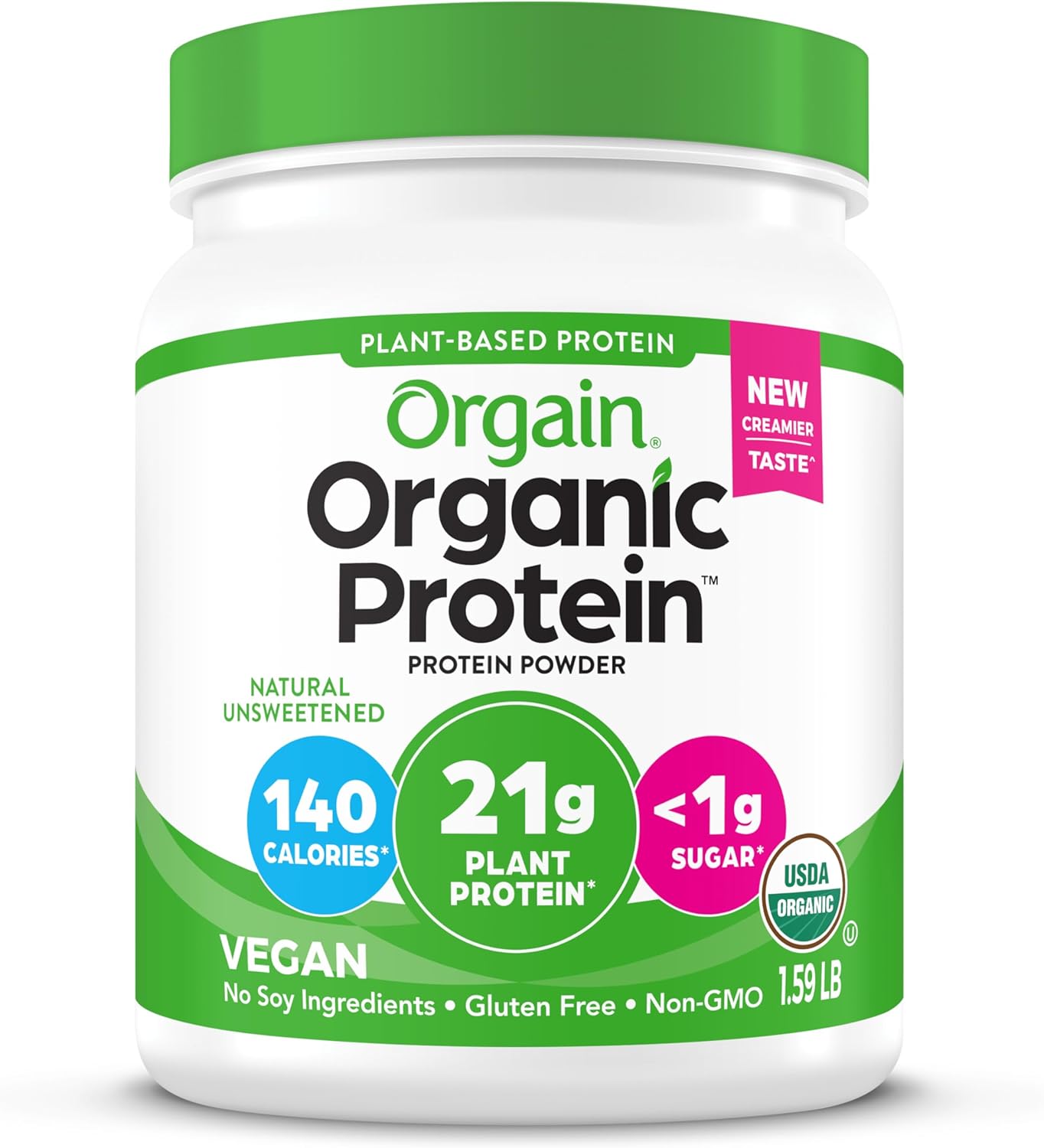
Orgain
Orgain Organic Vegan Protein Powder, Natural Unsweetened - 21g of Plant Protein, 4g Prebiotic Fiber, Low Net Carbs, No Lactose Ingredients, No Added Sugar, Non-GMO, For Shakes & Smoothies, 1.59 lb
Price per 25g protein
$1.88

Isopure
Isopure Zero Carb 100% Pure Whey Isolate Protein Powder, Lactose Free, Gluten Free, With Vitamins, Vanilla Salted Caramel, 25g Protein Per Serving, 3 Lbs, 42 Servings (Packaging May Vary)
Price per 25g protein
$1.89

Garden of Life
Garden of Life Protein Powder, Vegan Protein Powder, BCAA, Probiotics & Digestive Enzymes, Gluten & Lactose Free, Chocolate, 1.5 LB
Price per 25g protein
$1.93

Garden of Life
Garden of Life Protein Powder, Vegan Protein Powder, BCAA, Probiotics & Digestive Enzymes, Gluten & Lactose Free, Vanilla, 1.5 LB
Price per 25g protein
$1.93

Garden of Life
Garden of Life Creamy Vanilla Cookie Protein Powder + Oatmilk 20g Organic Vegan Plant Based Protein, Coconut Water, MCTs, Sprouted Grains, Prebiotics, Probiotics – Non-GMO, Gluten-Free, 1.90 LB
Price per 25g protein
$1.97

NAKED
NAKED Collagen Advanced - Peptides Protein Powder, Hyaluronic Acid, Vitamin C, Pasture-Raised, Grass-Fed Hydrolyzed Collagen Supplement, Paleo Friendly, Non-GMO, Keto, Gluten Free, 21oz - 30 Servings
Price per 25g protein
$2.06

Equip
Equip Foods Prime Protein Powder | Clean, Grass Fed Beef Protein Powder | Carnivore Protein Isolate | Paleo, Keto Friendly | Gluten & Dairy Free | Helps Build & Repair Tissue | 30 Servings, Chocolate
Price per 25g protein
$2.16

NAKED
NAKED Chocolate Collagen Peptides Protein Powder, 24 Servings, Pasture-Raised, Grass-Fed Hydrolyzed Collagen Supplement, Paleo Friendly, Non-GMO, Keto, Gluten Free, 20oz
Price per 25g protein
$2.21

Animal
Clear Whey Isolate Protein Powder - Easy to Digest and Mix, 5g BCAA, Deliciously Juicy, Refreshing Anytime Drink for Men and Women, Watermelon Limeade 500g (20 Servings)
Price per 25g protein
$2.25
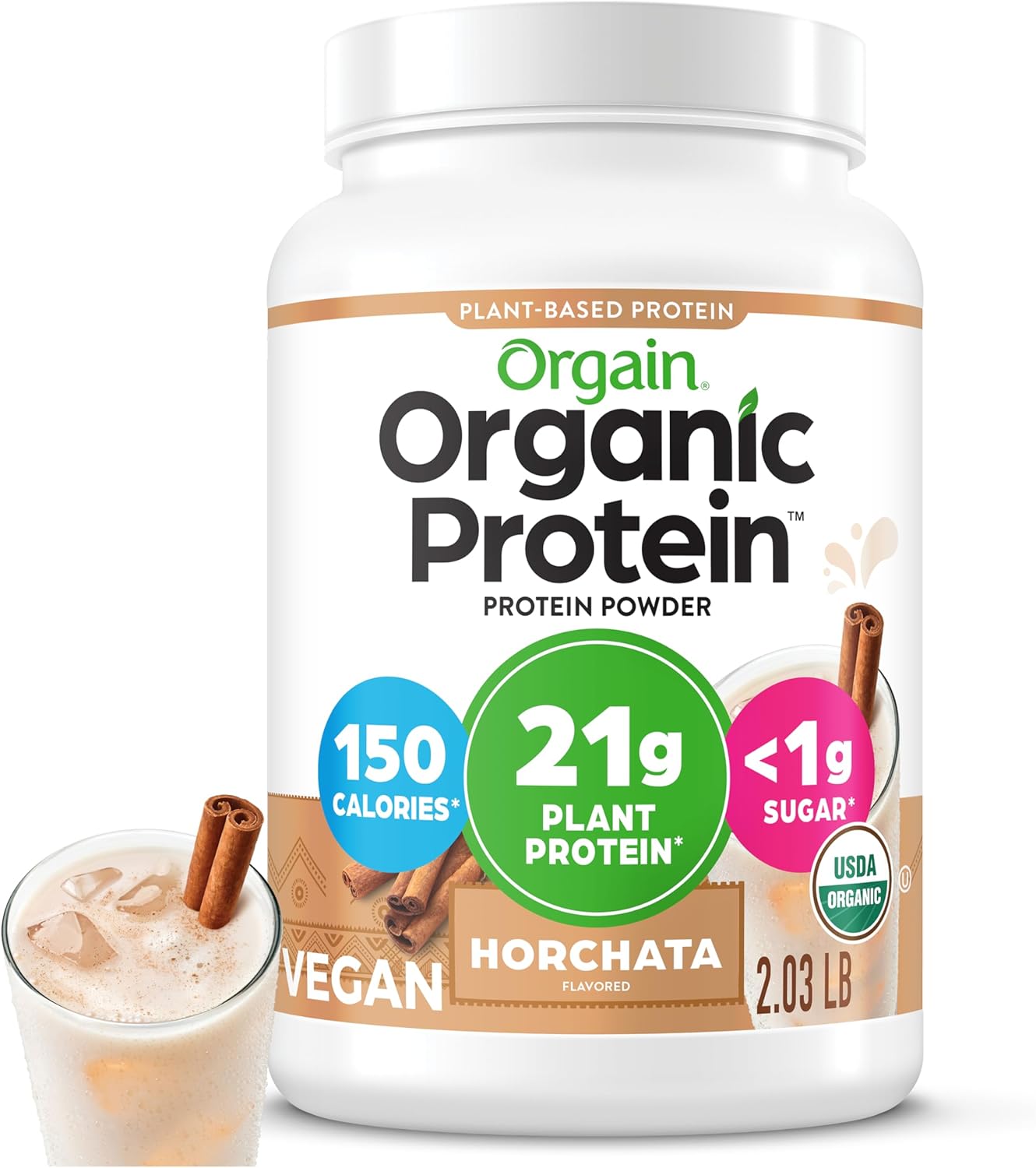
Orgain
Orgain Organic Vegan Protein Powder, Horchata - 21g Plant Based Protein, 9g Prebiotic Fiber, Low Net Carb, No Lactose Ingredients, No Added Sugar, Non-GMO, For Shakes & Smoothies, 2.03 lb
Price per 25g protein
$2.26

Equip
Equip Foods Prime Protein Powder | Clean, Grass Fed Beef Protein Powder for Women & Men | Carnivore Protein Isolate | Paleo, Keto Friendly | Gluten & Dairy Free | 30 Servings, Peanut Butter
Price per 25g protein
$2.27

Equip
Equip Foods Prime Protein Powder | Clean, Grass Fed Beef Protein Powder | Carnivore Protein Isolate | Paleo, Keto Friendly | Gluten & Dairy Free | Helps Build & Repair Tissue | 30 Servings, Strawberry
Price per 25g protein
$2.27

Equip
Equip Foods Prime Protein Powder | Clean, Grass Fed Beef Protein Powder | Carnivore Protein Isolate | Paleo, Keto Friendly | Gluten & Dairy Free | Helps Build & Repair Tissue | 30 Servings, Unflavored
Price per 25g protein
$2.27

NAKED
NAKED Vanilla Collagen Peptides Protein Powder, 25 Servings, Pasture-Raised, Grass-Fed Hydrolyzed Collagen Supplement, Paleo Friendly, Non-GMO, Keto, Gluten Free, 19.4oz
Price per 25g protein
$2.33

Animal
Clear Whey Isolate Protein Powder - Easy to Digest and Mix, 5g BCAA, Deliciously Juicy, Refreshing Anytime Drink for Men and Women, Blueberry Acai 500g (20 Servings)
Price per 25g protein
$2.34
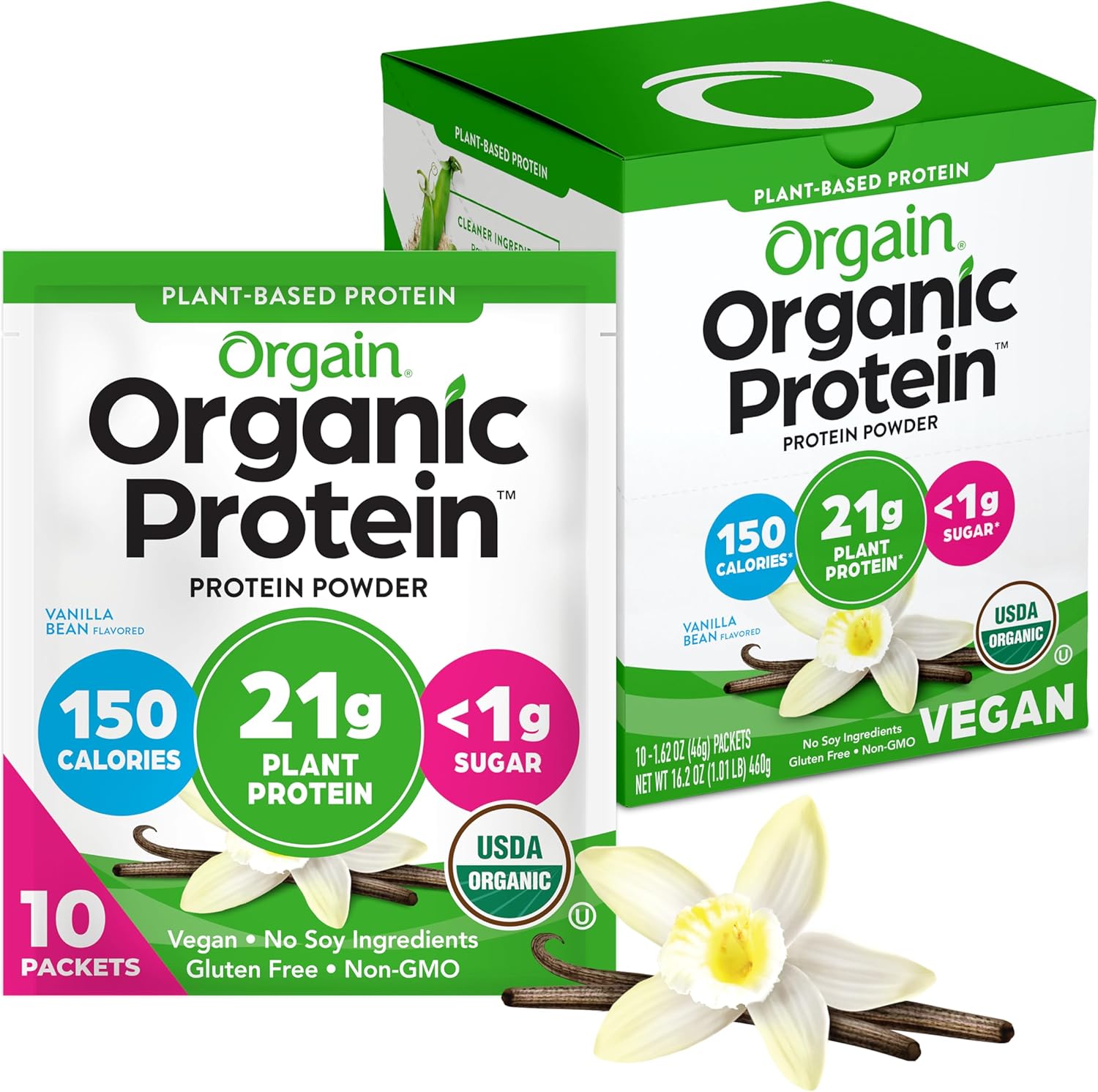
Orgain
Orgain Organic Vegan Protein Powder, Vanilla Bean - 21g Plant Protein, 5g Prebiotic Fiber, Low Carb, No Lactose Ingredients, No Added Sugar, Non-GMO, For Shakes & Smoothies, 10 Travel Packs
Price per 25g protein
$2.38

Animal
Clear Whey Isolate Protein Powder - Easy to Digest and Mix, 5g BCAA, Deliciously Juicy, Refreshing Anytime Drink for Men and Women, Pineapple Orange 500g (20 Servings)
Price per 25g protein
$2.50
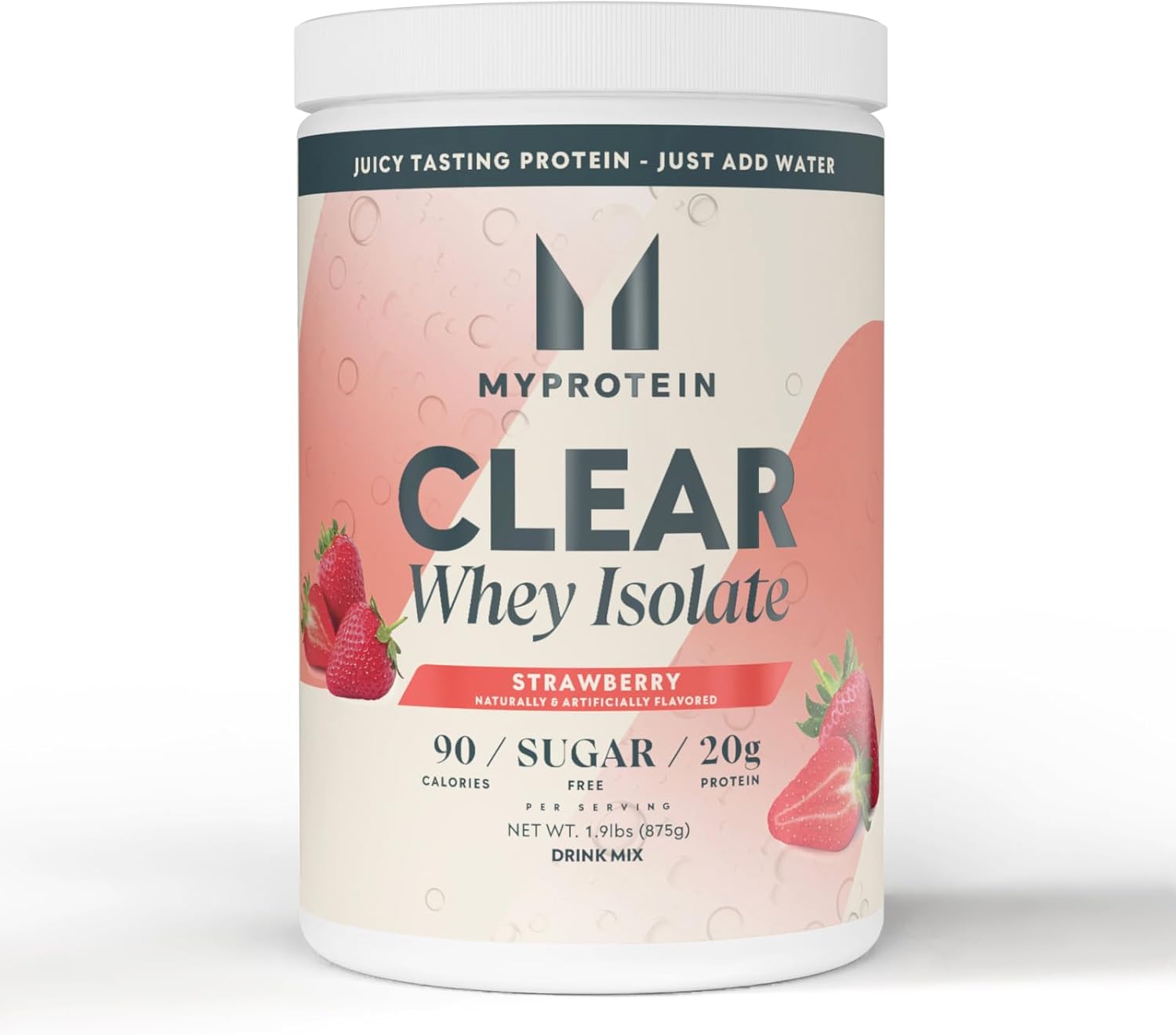
Myprotein
Myprotein Clear Whey Isolate Protein Powder, 35 Servings, (1.9lbs) Strawberry, 20g Protein per Serving, Naturally Flavored Drink Mix, Daily Protein Intake for Superior Performance
Price per 25g protein
$2.50

Naked Nutrition
Naked Seed - 4 Seed Protein Powder, Only 4 Ingredients - Chia, Watermelon, Sunflower and Pumpkin Seed - Gluten-Free, Soy Free, Vegan, No Gmos, No Artificial Sweeteners - 15 Servings
Price per 25g protein
$2.92

Momentous
Momentous Essential Grass-Fed Whey Protein Powder – 20 g Whey Isolate Protein – NSF Certified for Sport – Gluten-Free – 25 Servings for Essential Everyday Use – Chocolate – Net WT 1.44 LB (655 g)
Price per 25g protein
$3.11

Orgain
Orgain Protein Powder + Collagen, Vanilla Bean - 25g of Protein, 10g Collagen Peptides, Type I & III, 1B CFU Probiotics, Supports Hair, Skin, Nail, Joint & Gut Health, Gluten Free - 1.6lb
Price per 25g protein
$3.17

Orgain
Orgain Protein Powder + Collagen, Creamy Chocolate Fudge - 25g of Protein, 10g Collagen Peptides, Type I & III, 1B CFU Probiotics, Supports Hair, Skin, Nail, Joint & Gut Health, Gluten Free - 1.6lb
Price per 25g protein
$3.21

Animal
Clear Whey Isolate Protein Powder - Easy to Digest and Mix, 5g BCAA, Deliciously Juicy, Refreshing Anytime Drink for Men and Women, Pineapple Orange 125g (5 Servings)
Price per 25g protein
$3.25

Garden of Life
Garden of Life Sport Whey Protein Powder Vanilla Flavor 20g Plus Marine Collagen Peptides & MSM for Women and Men, Optimum Amino Energy, Younger, Healthier Looking Skin - Grass Fed, About 15 Servings
Price per 25g protein
$3.56
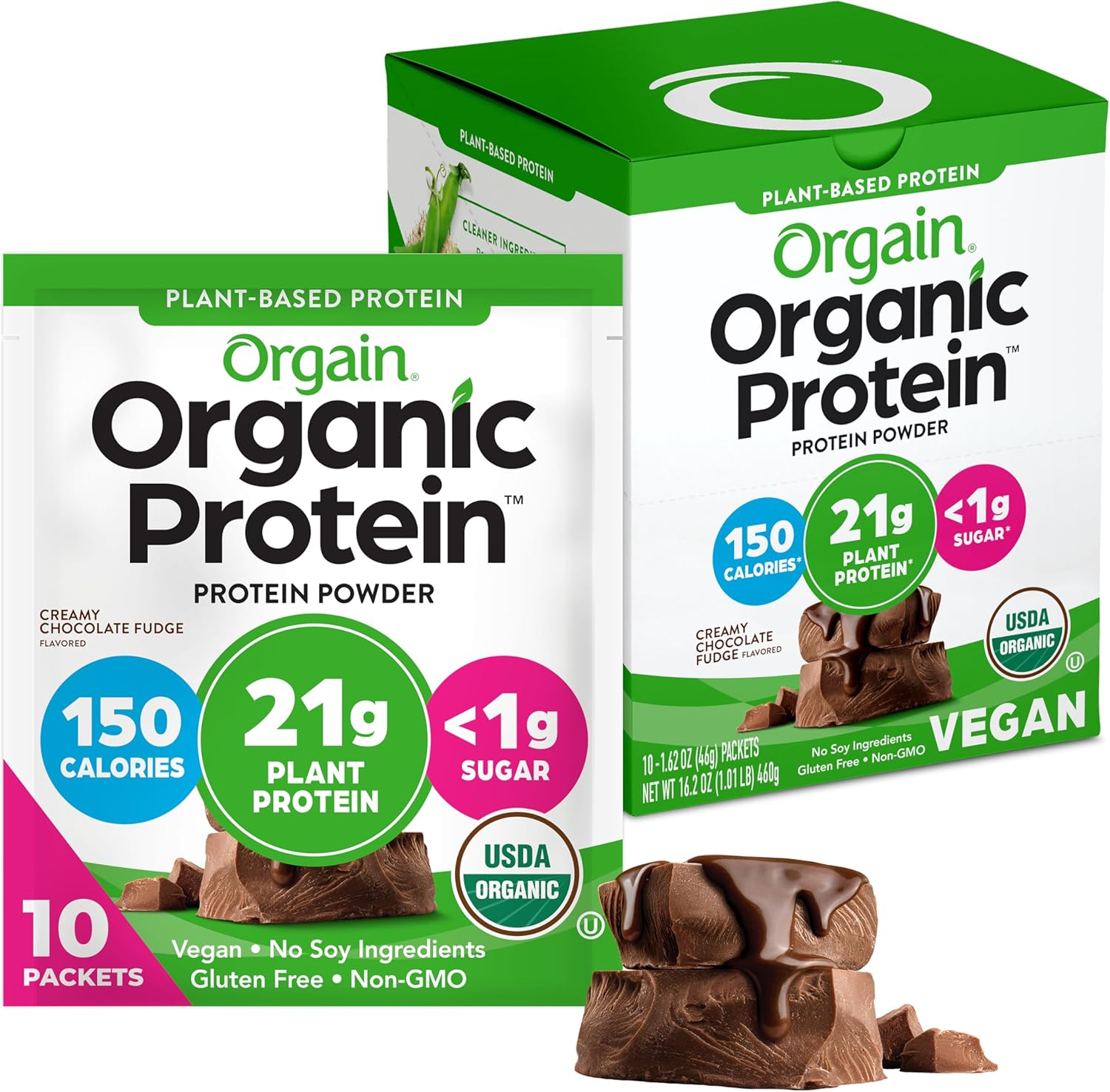
Orgain
Orgain Organic Vegan Protein Powder, Creamy Chocolate Fudge - 21g Plant Protein, 6g Prebiotic Fiber, Low Carb, No Lactose Ingredients, No Added Sugar, Non-GMO, For Shakes & Smoothies, 10 Travel Packs
Price per 25g protein
$3.57

Animal
Clear Whey Isolate Protein Powder - Easy to Digest and Mix, 5g BCAA, Deliciously Juicy, Refreshing Anytime Drink for Men and Women, Blueberry Acai 125g (5 Servings)
Price per 25g protein
$5.05

Body Fortress
Body Fortress Super Advanced Whey Protein Powder, Vanilla Flavored, Gluten Free, 2 Lb
Price per 25g protein
$10.38
Frequently Asked Questions
What does "sugar-free" actually mean when it comes to whey protein?
When applied to whey protein, "sugar-free" typically means the product contains no added sugars—ingredients added specifically to sweeten the product, such as cane sugar, brown sugar, honey, maple syrup, or dextrose. However, this definition doesn't necessarily mean zero carbohydrates or zero naturally occurring sugars. Whey protein concentrate naturally contains some lactose (milk sugar), typically 3-4g per serving, while whey isolate undergoes additional processing that removes most lactose, usually containing less than 1g per serving. In the United States, FDA labeling regulations define "sugar-free" as containing less than 0.5g of sugars per serving, but this applies specifically to added sugars, not naturally occurring ones. To determine the total carbohydrate and sugar content, check both the nutrition facts panel (focusing on "Total Carbohydrates," "Total Sugars," and "Added Sugars") and the ingredient list. Products truly suitable for low-carb, keto, or diabetic diets typically use non-nutritive sweeteners and contain minimal total carbohydrates per serving.
What sweeteners are typically used in sugar-free whey protein products?
Sugar-free whey protein products employ a variety of alternative sweeteners to provide palatability without adding sugar. The most common include high-intensity artificial sweeteners like sucralose (Splenda), acesulfame potassium (Ace-K), and occasionally aspartame, which provide sweetness hundreds of times more potent than sugar with minimal calories. Natural high-intensity sweeteners are increasingly popular, particularly stevia extract (from the Stevia rebaudiana plant) and monk fruit extract (from Luo Han Guo fruit), both offering zero-calorie sweetness from botanical sources. Some formulations use sugar alcohols such as erythritol, xylitol, or maltitol, which provide sweetness with fewer calories and minimal blood sugar impact compared to regular sugar, though they may cause digestive discomfort in some individuals when consumed in large amounts. Premium products often employ sophisticated sweetener blends combining several types to minimize undesirable aftertastes while maximizing flavor profiles—for example, pairing stevia with erythritol or monk fruit with a small amount of sucralose. Flavor systems can also include natural flavor enhancers like vanilla extract or cocoa to improve taste without adding sugar.
Does sugar-free whey protein taste worse than regular whey protein?
Taste perception is highly subjective, and modern sugar-free whey protein formulations have significantly improved their flavor profiles compared to earlier generations. The taste difference between sugar-free and sugar-sweetened whey proteins largely depends on the specific sweeteners used and the sophistication of the flavoring system. Products using sucralose often deliver sweetness profiles most similar to sugar-sweetened products, as this sweetener closely mimics sugar's taste characteristics. Natural sweeteners like stevia and monk fruit have distinctive taste profiles—stevia sometimes exhibits a slight licorice-like aftertaste, while monk fruit may have a fruity quality. Some manufacturers combine multiple sweeteners in precise ratios to balance their sensory profiles and minimize any undesirable aftertastes. Premium sugar-free formulations invest heavily in comprehensive flavor systems that incorporate flavor enhancers, masking agents, and texture modifiers to create experiences comparable to sugar-sweetened products. Individual preference plays a significant role, and many consumers find they adapt to alternative sweetener profiles over time. Sampling single-serving packets before committing to a full container can help identify brands whose flavoring systems align with your personal preferences.
New to whey? Read our beginner's guide
Read our beginner's guide to learn everything you need to know about whey protein.
How might sugar-free whey protein affect blood glucose levels for diabetic individuals?
Sugar-free whey protein typically has minimal impact on blood glucose levels, making it generally suitable for individuals with diabetes when part of a physician-approved nutrition plan. The protein itself causes minimal glucose elevation while potentially stimulating insulin release through incretin hormone pathways, which can actually help with glucose regulation. High-quality sugar-free products avoid added sugars and instead use non-nutritive sweeteners like stevia, monk fruit, sucralose, or erythritol, which have negligible effects on blood glucose. For maximum blood sugar stability, whey isolate is preferable to concentrate due to its lower lactose (milk sugar) content—typically less than 1g per serving versus 3-4g in concentrate. Individual responses can vary based on overall formulation, serving size, and personal metabolic factors. Some people experience a small glucose-lowering effect when consuming protein before carbohydrates, as it may slow gastric emptying and carbohydrate absorption. Always check the nutrition facts panel for total carbohydrates, not just sugar content, and monitor your personal glucose response. For those with diabetes, it's advisable to consult with healthcare providers regarding specific product choices and timing of protein supplementation.
What hidden carbohydrate sources should I watch for in "sugar-free" whey protein?
When evaluating "sugar-free" whey protein, several potential hidden carbohydrate sources warrant attention beyond just the absence of added sugars. First, check the protein type—whey concentrate naturally contains lactose (milk sugar), typically 3-4g per serving, while whey isolate contains significantly less (usually under 1g). Some products use maltodextrin as a bulking agent or processing aid, which has a high glycemic index despite not being classified as a sugar. Fiber additives like inulin or chicory root fiber contribute to total carbohydrates, though their blood sugar impact differs from sugars. Certain thickeners and stabilizers such as guar gum, xanthan gum, or carrageenan add minimal carbs but still count in the total. Sugar alcohols (erythritol, xylitol, maltitol) are technically carbohydrates though their caloric value and blood sugar impact are reduced compared to sugar. For complete assessment, examine both the Nutrition Facts panel (particularly "Total Carbohydrates" not just "Sugars") and the full ingredient list. Products marketed for keto or low-carb diets should ideally contain fewer than 2-3g total carbohydrates per serving to minimize potential blood sugar impacts.
What makes premium sugar-free whey proteins superior to standard sugar-free options?
Premium sugar-free whey proteins distinguish themselves through several quality dimensions. Superior sweetener systems represent a primary differentiator—elite brands employ proprietary blends of multiple high-quality sweeteners in precise ratios, often combining natural options like stevia and monk fruit with trace amounts of other sweeteners to create balanced flavor profiles without aftertastes. Advanced flavor technology incorporates flavor modulators, masking agents, and enhancers that complement the protein's natural characteristics rather than simply attempting to cover them. The protein source itself is typically higher grade, often featuring cold-processed cross-flow microfiltered isolate with minimal denaturation, preserving bioactive protein fractions lost in lower-quality processing methods. Premium formulations are characterized by cleaner labels, avoiding fillers, thickeners, and artificial colors while focusing on functional ingredients that enhance performance or digestion. These superior products frequently utilize whey isolate rather than concentrate to minimize lactose (milk sugar) content, critical for true low-carb compatibility. Many top-tier brands perform extensive sensory testing with consumer panels to optimize taste and mouthfeel specifically for sugar-free formulations, rather than simply removing sugar from conventional recipes. This comprehensive approach creates a significantly elevated user experience that justifies the premium positioning.
How do different natural sweeteners in premium sugar-free whey protein compare for taste and health properties?
Premium sugar-free whey proteins utilize various natural sweeteners, each with distinct characteristics affecting both taste experience and health considerations. Stevia (extracted from Stevia rebaudiana leaves) offers zero-calorie sweetness 200-300 times stronger than sugar, with minimal glycemic impact, making it excellent for blood sugar management. However, some perceive a licorice-like aftertaste or bitter notes at higher concentrations. Monk fruit (Luo Han Guo) extract provides intense sweetness 150-200 times sweeter than sugar with zero calories and glycemic impact, featuring a cleaner sweet profile with fewer bitter notes than stevia, though sometimes with a distinct fruity quality. Erythritol, a sugar alcohol with 70% of sugar's sweetness but only 5% of its calories, causes minimal dental issues and digestive distress compared to other sugar alcohols, offering a cooling sensation in the mouth that works well in certain flavor profiles. Allulose, a rare sugar found naturally in small quantities in certain fruits, provides similar sweetness to sugar with about 90% fewer calories and minimal glycemic impact, melting and browning like sugar with excellent dissolution properties but at a higher cost. Leading products often combine these sweeteners strategically—pairing stevia with erythritol to balance sweetness profiles or using monk fruit with allulose for superior mouthfeel—creating sophisticated systems that deliver optimal taste while maintaining zero or minimal metabolic impact.